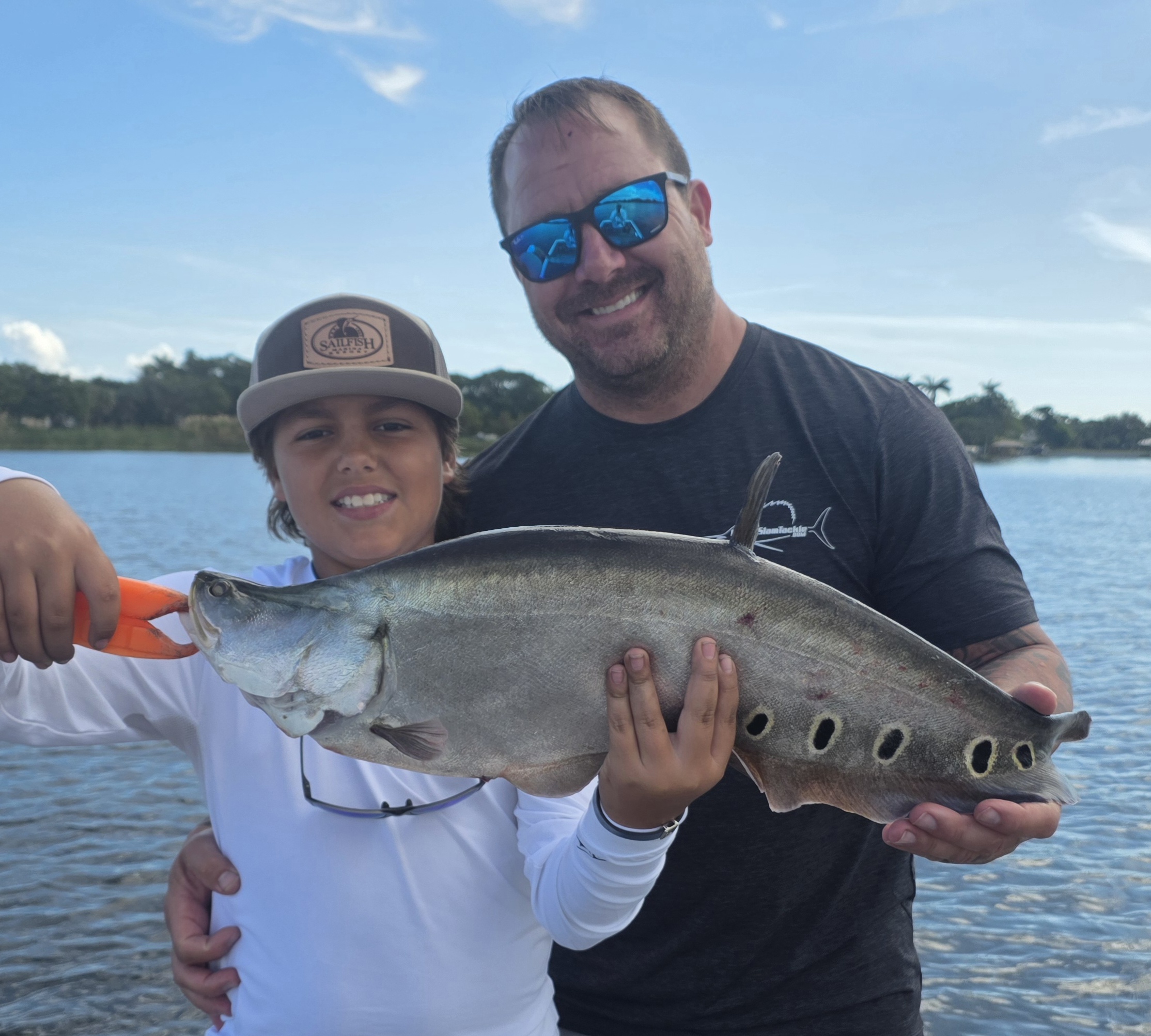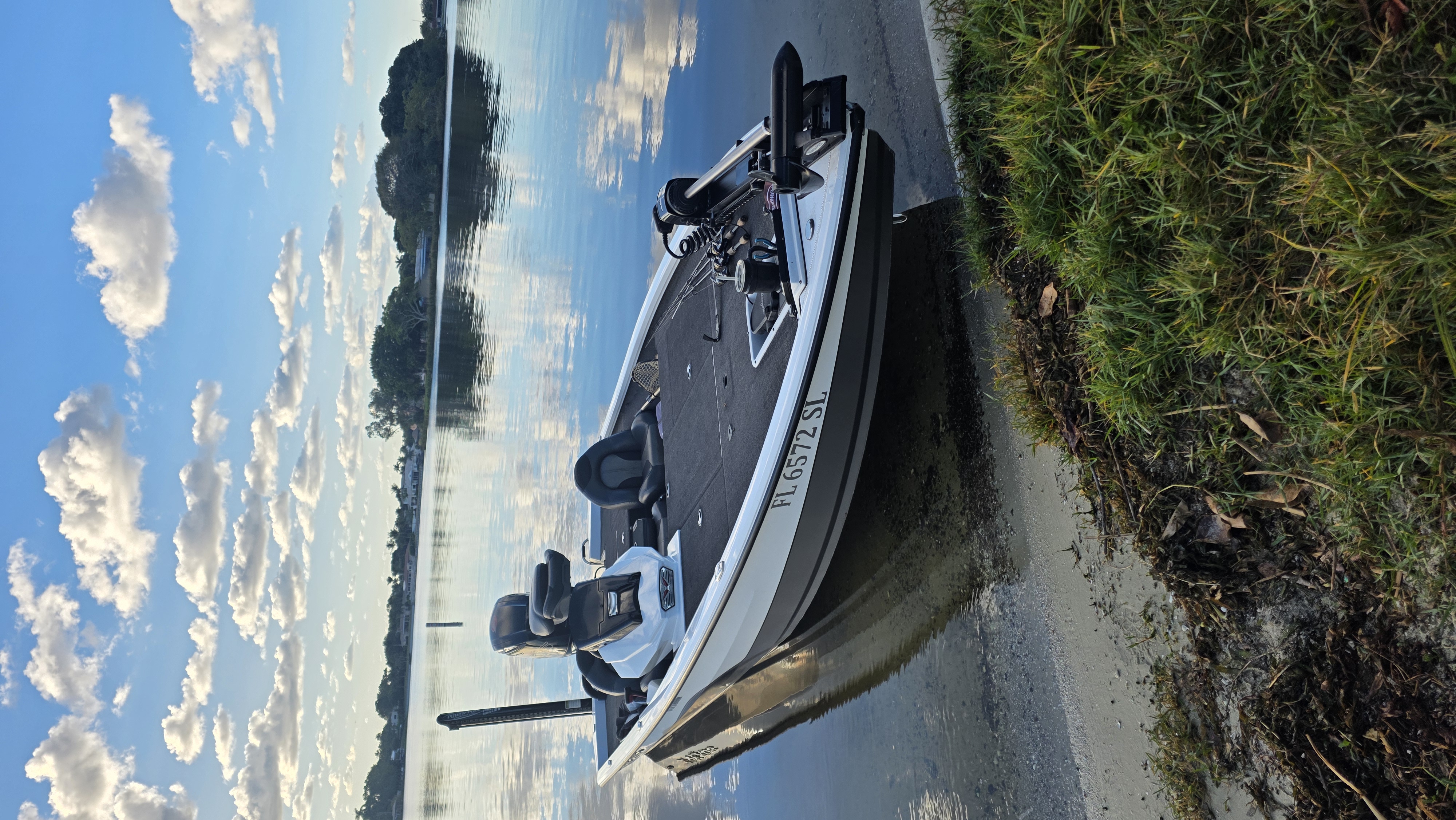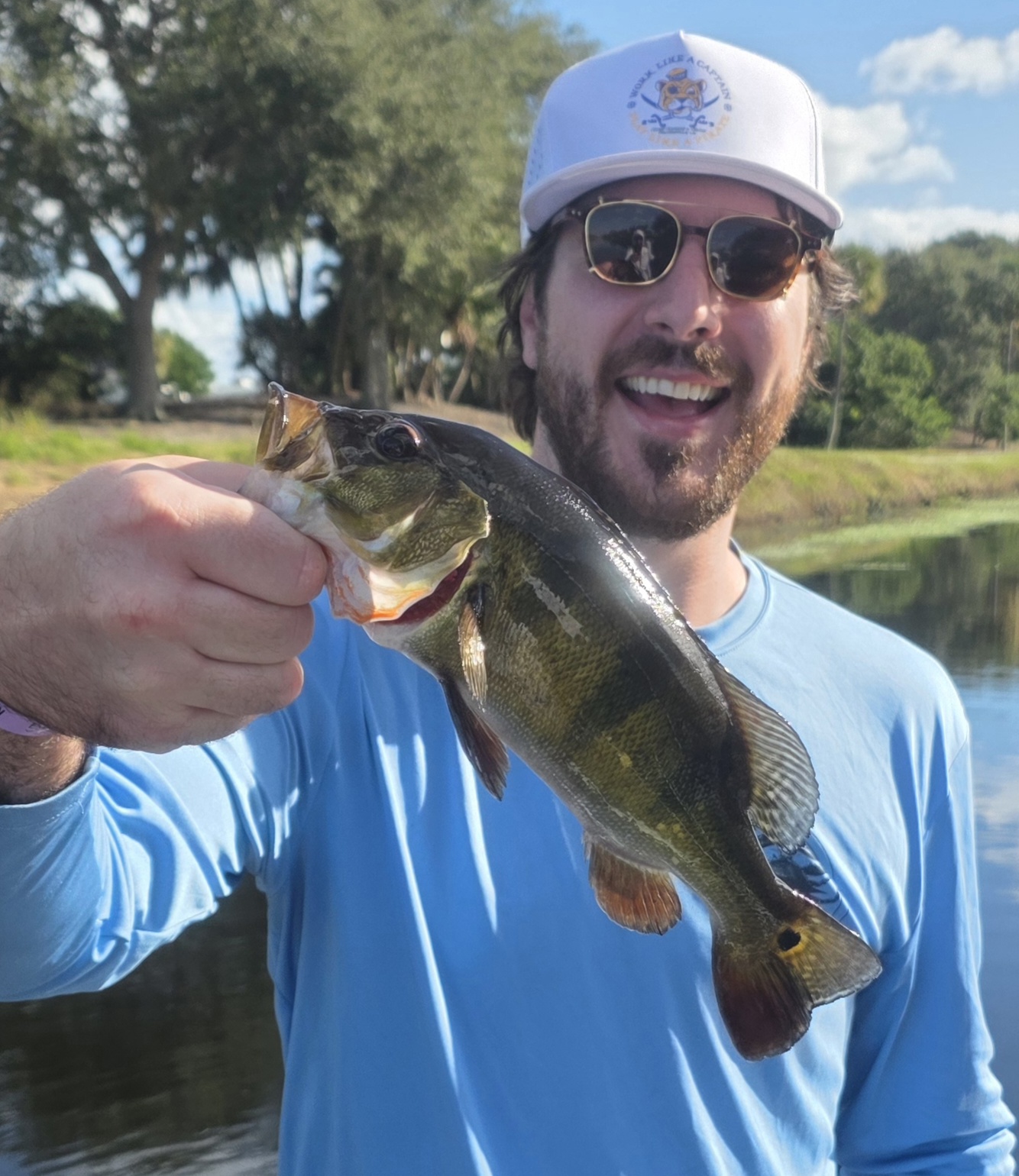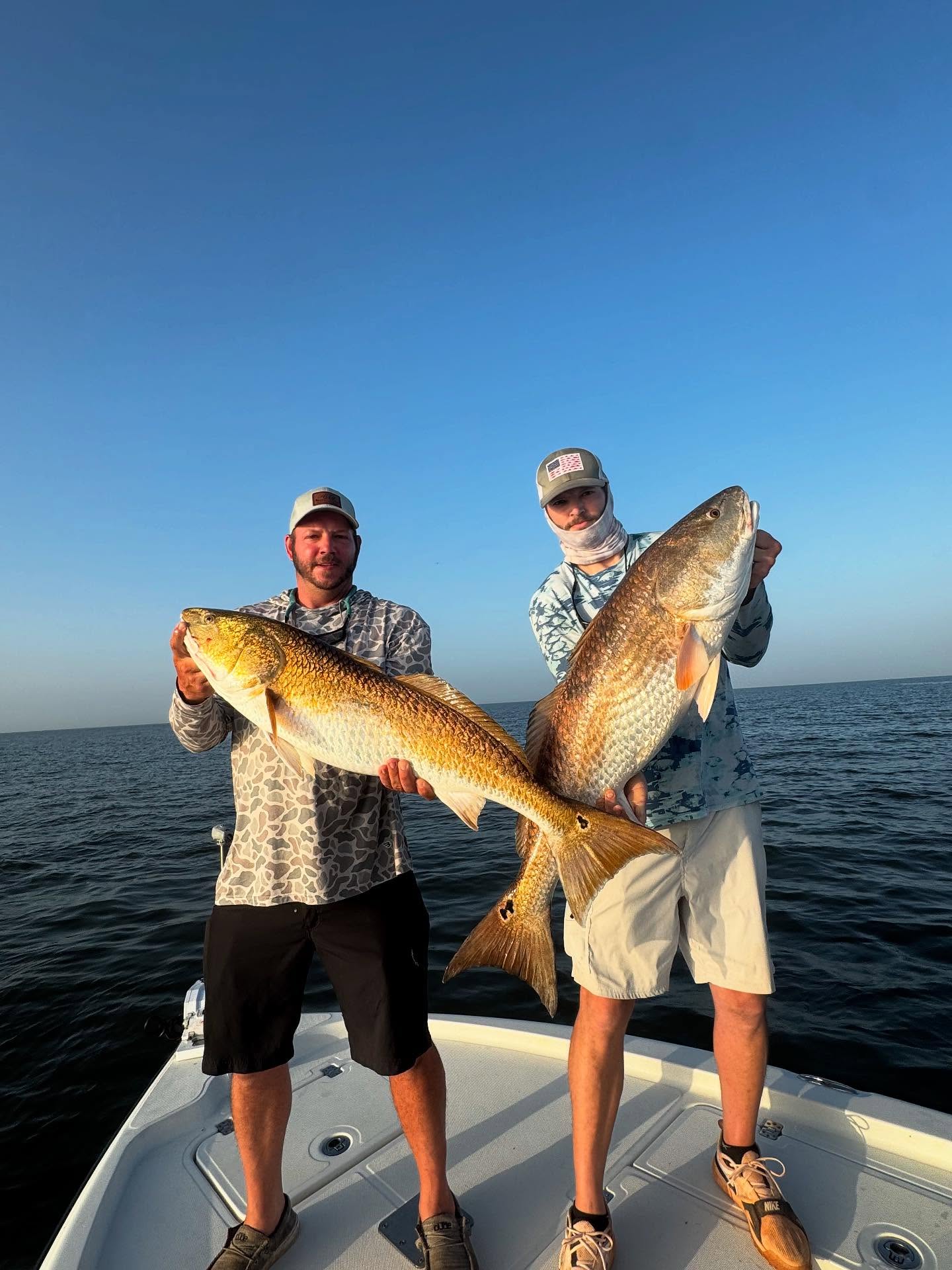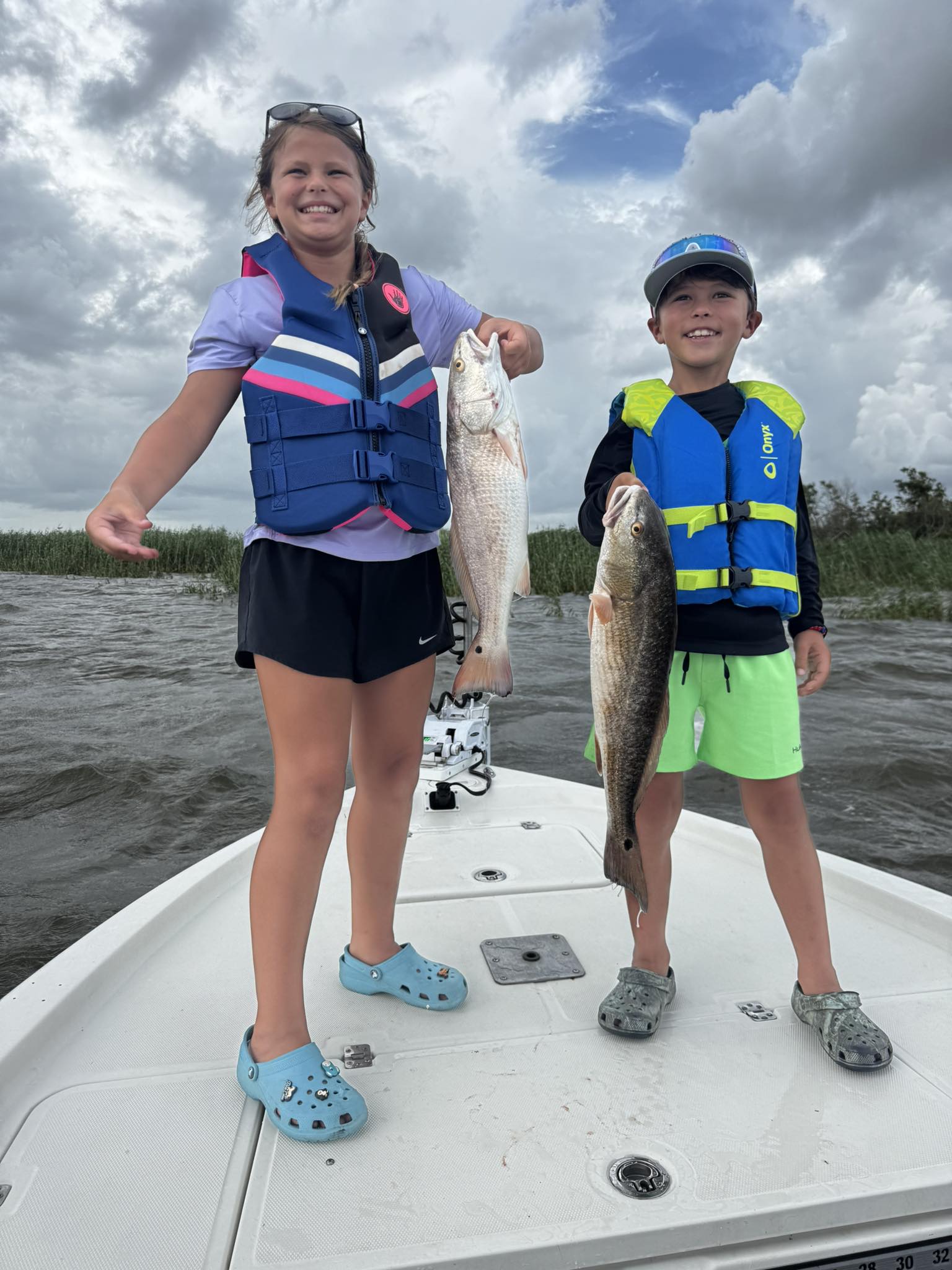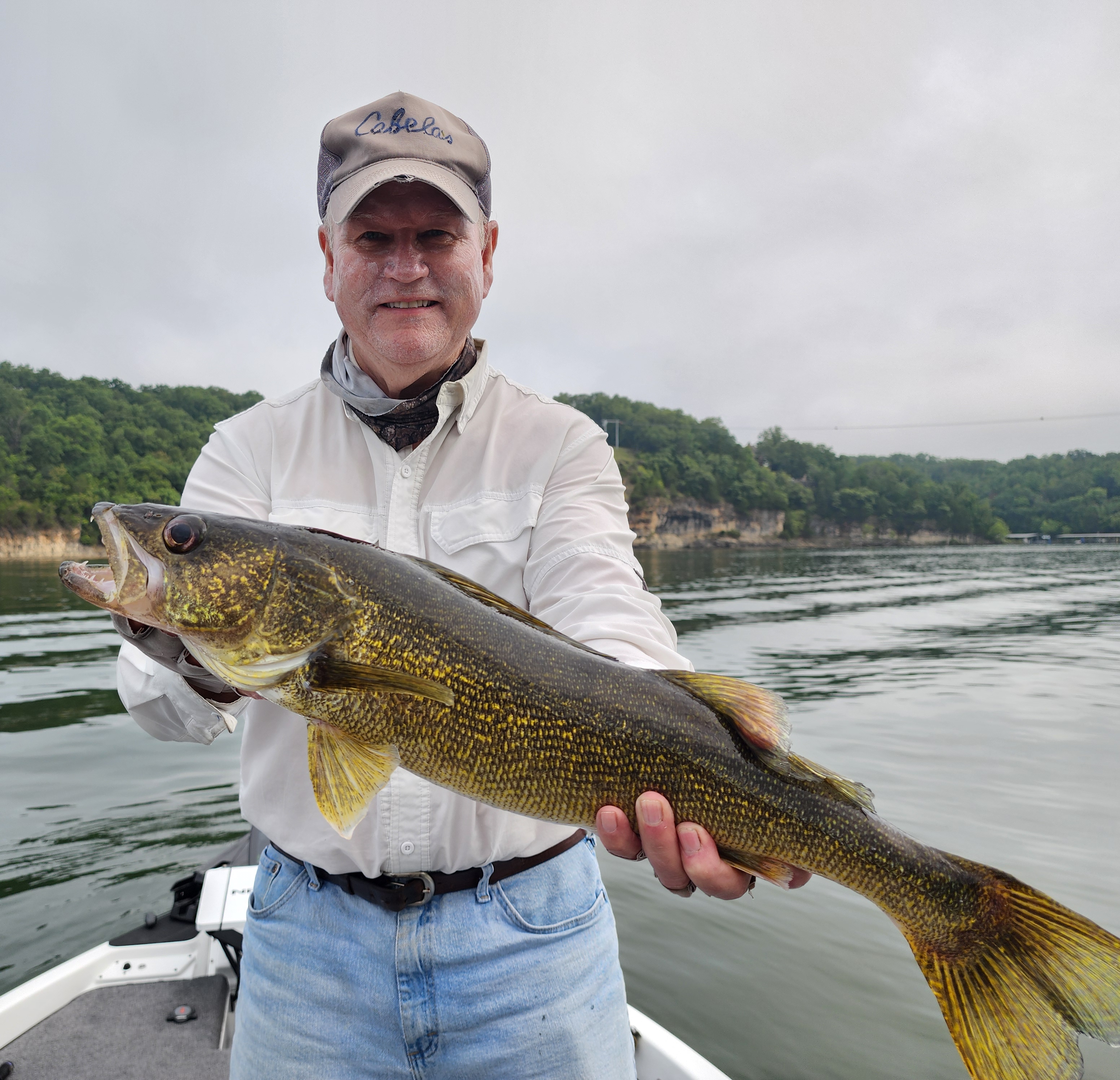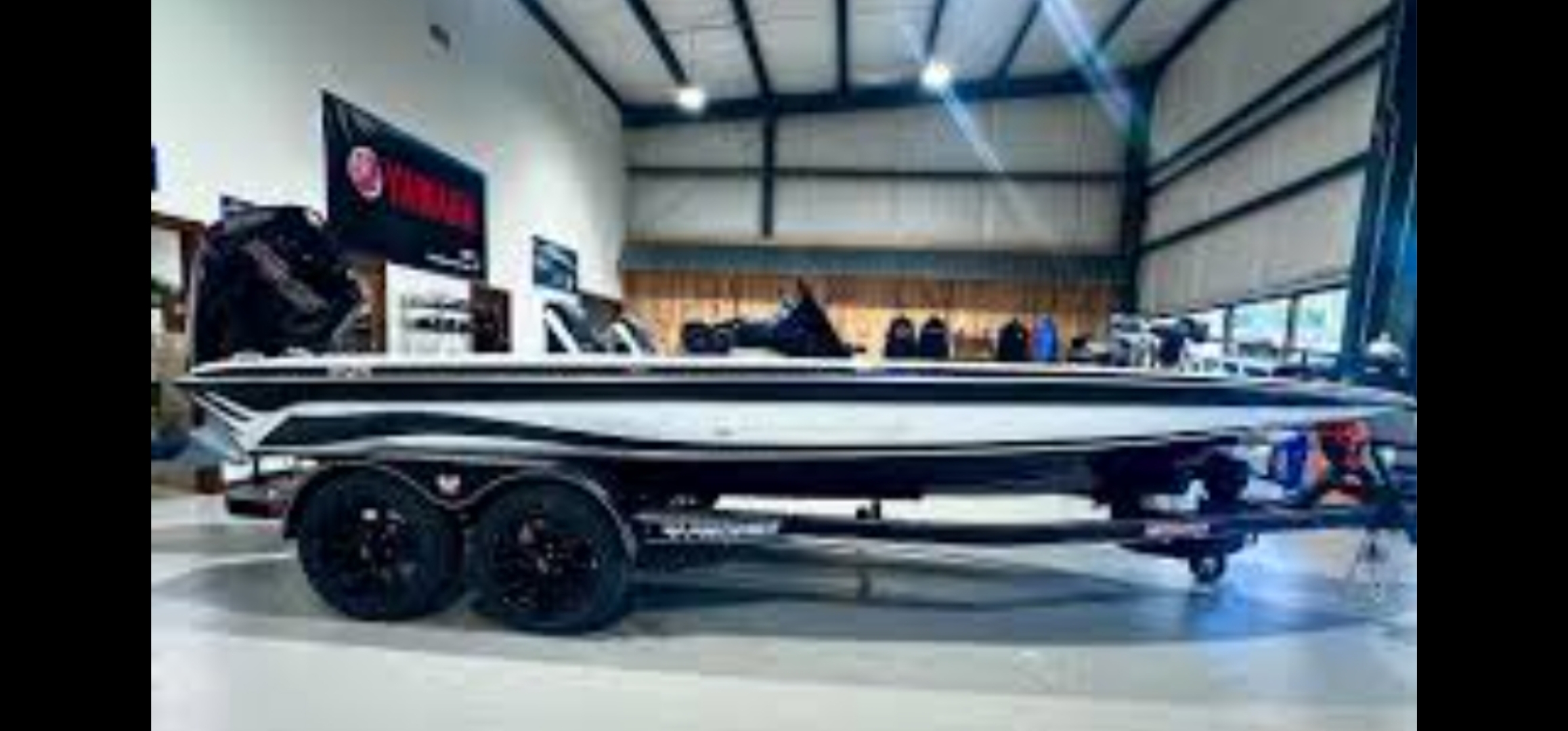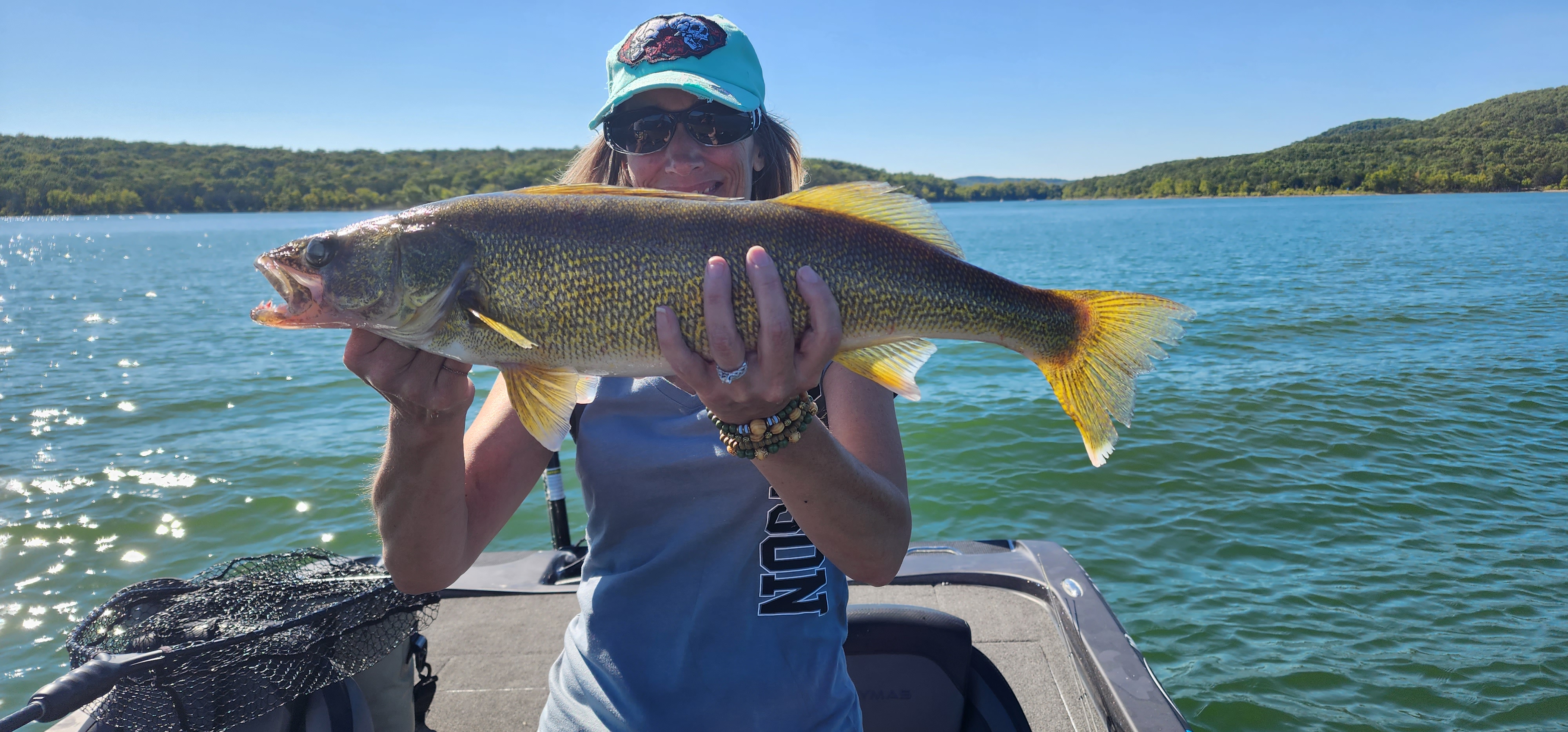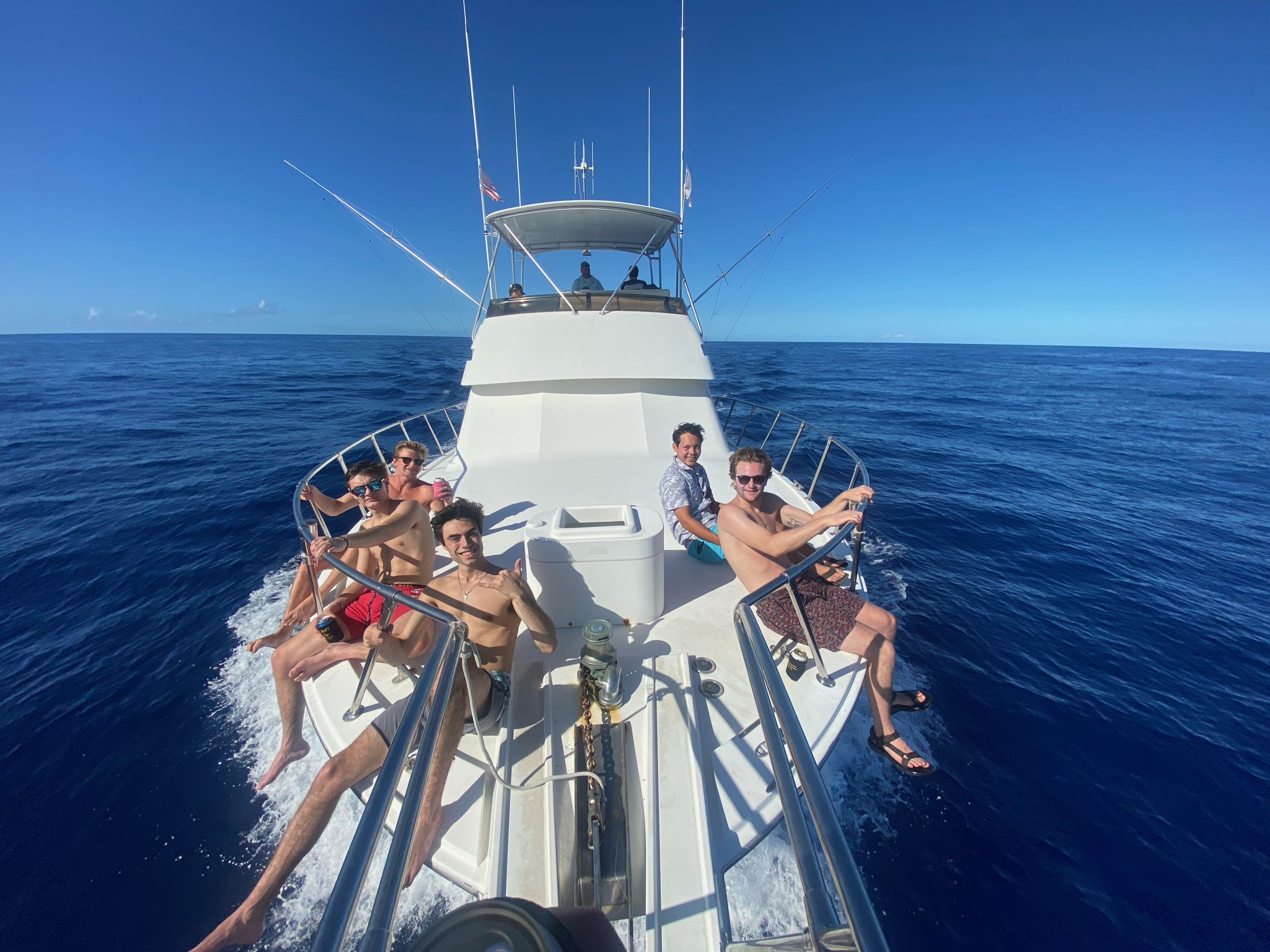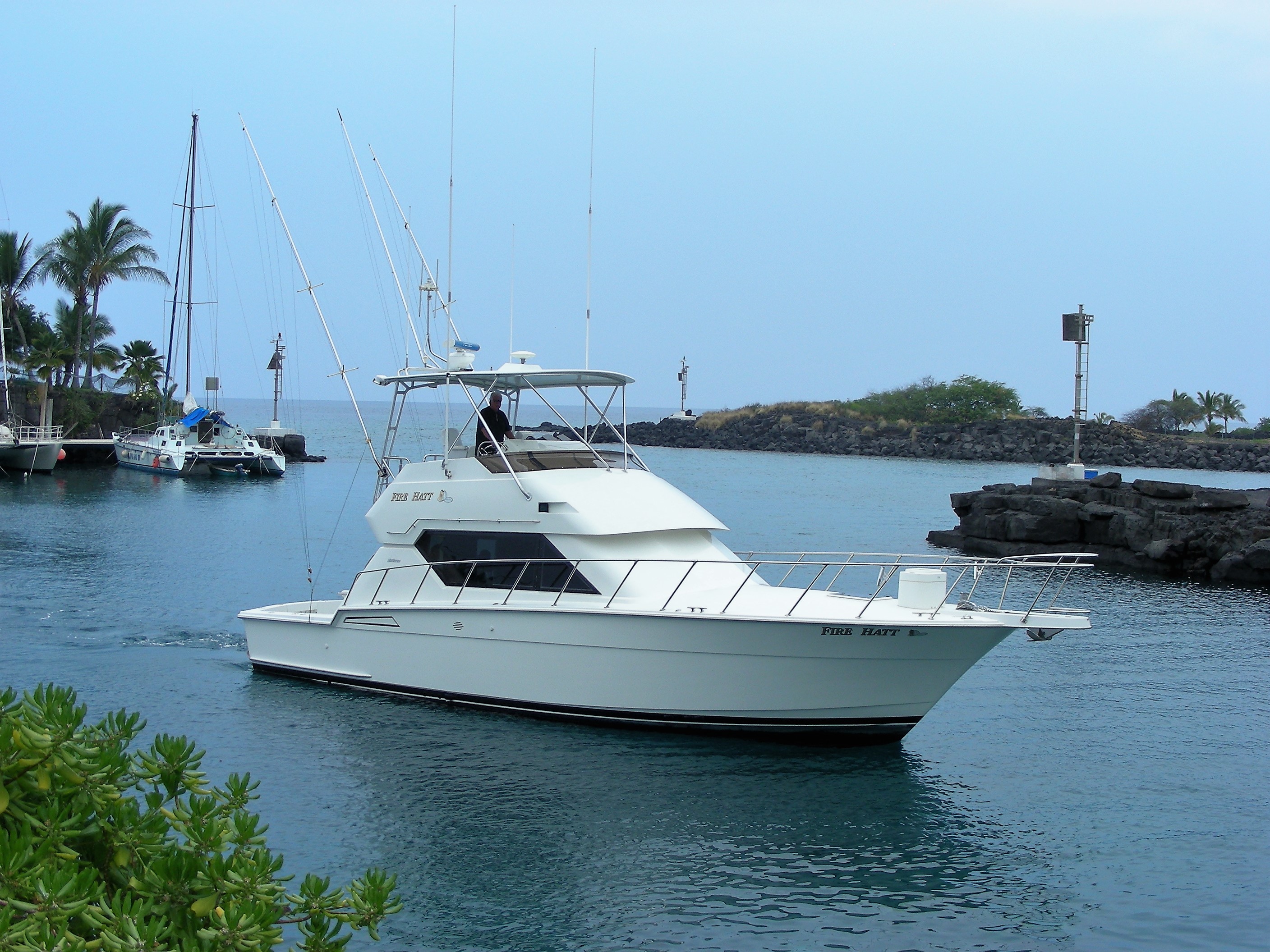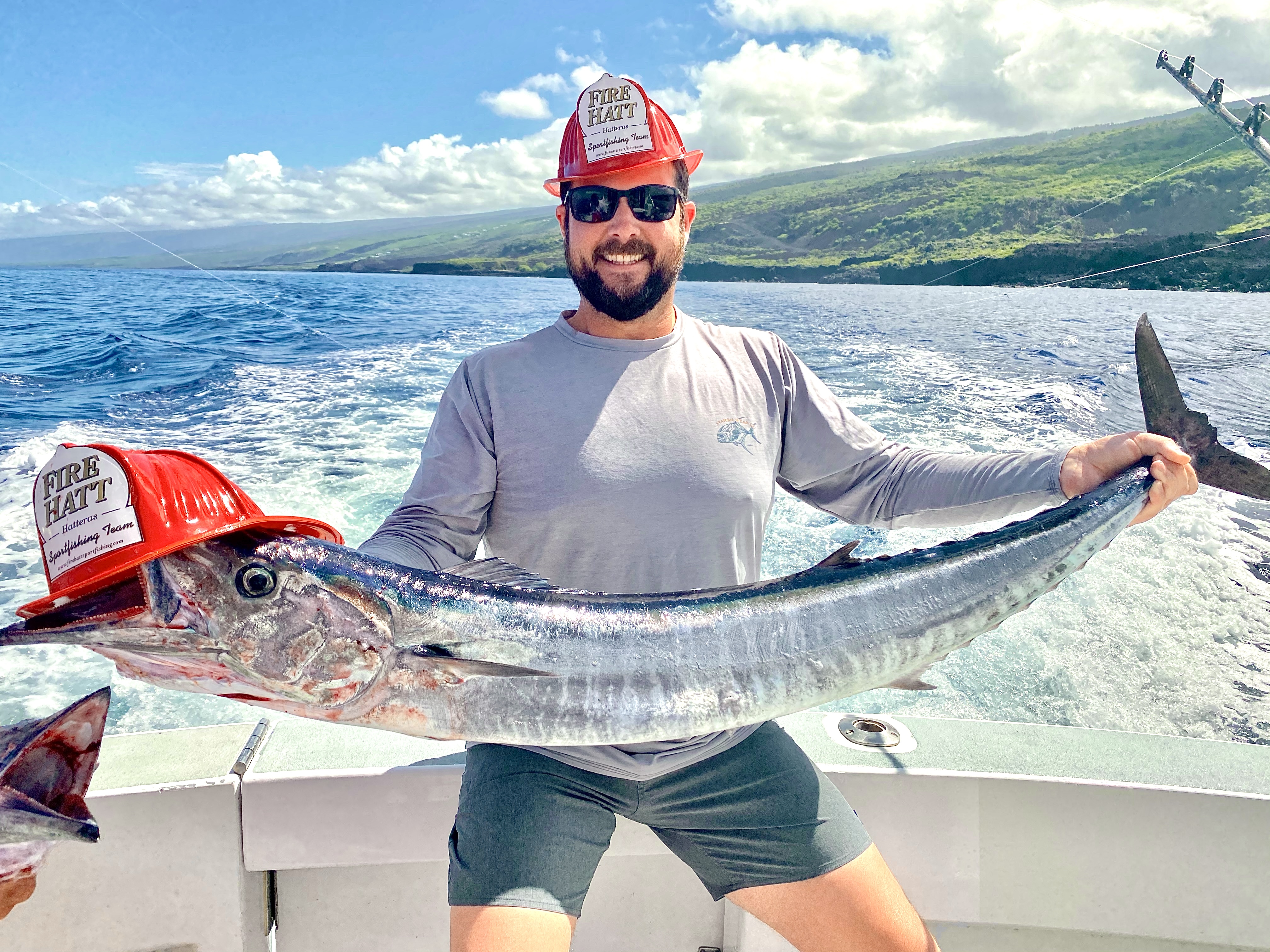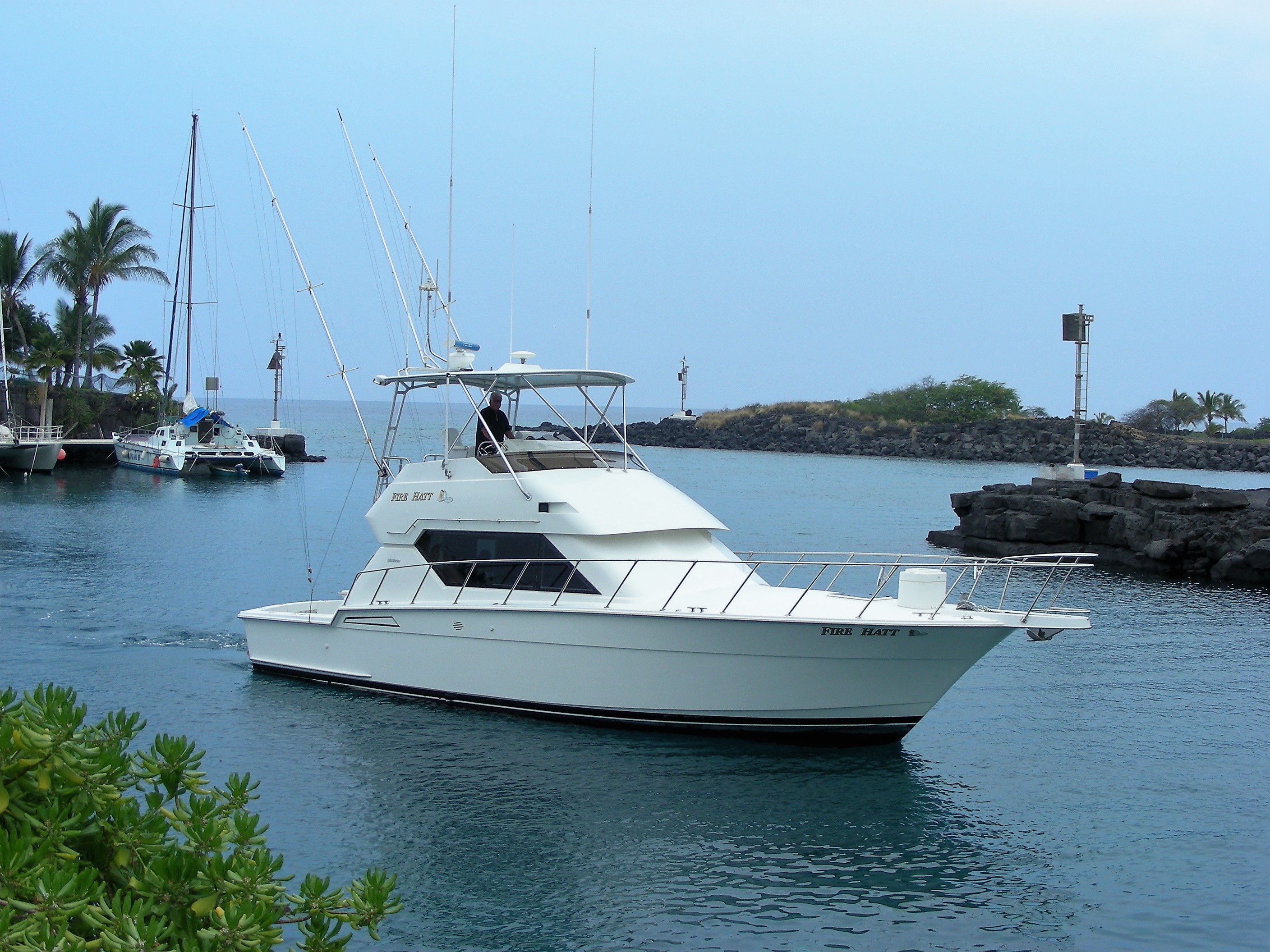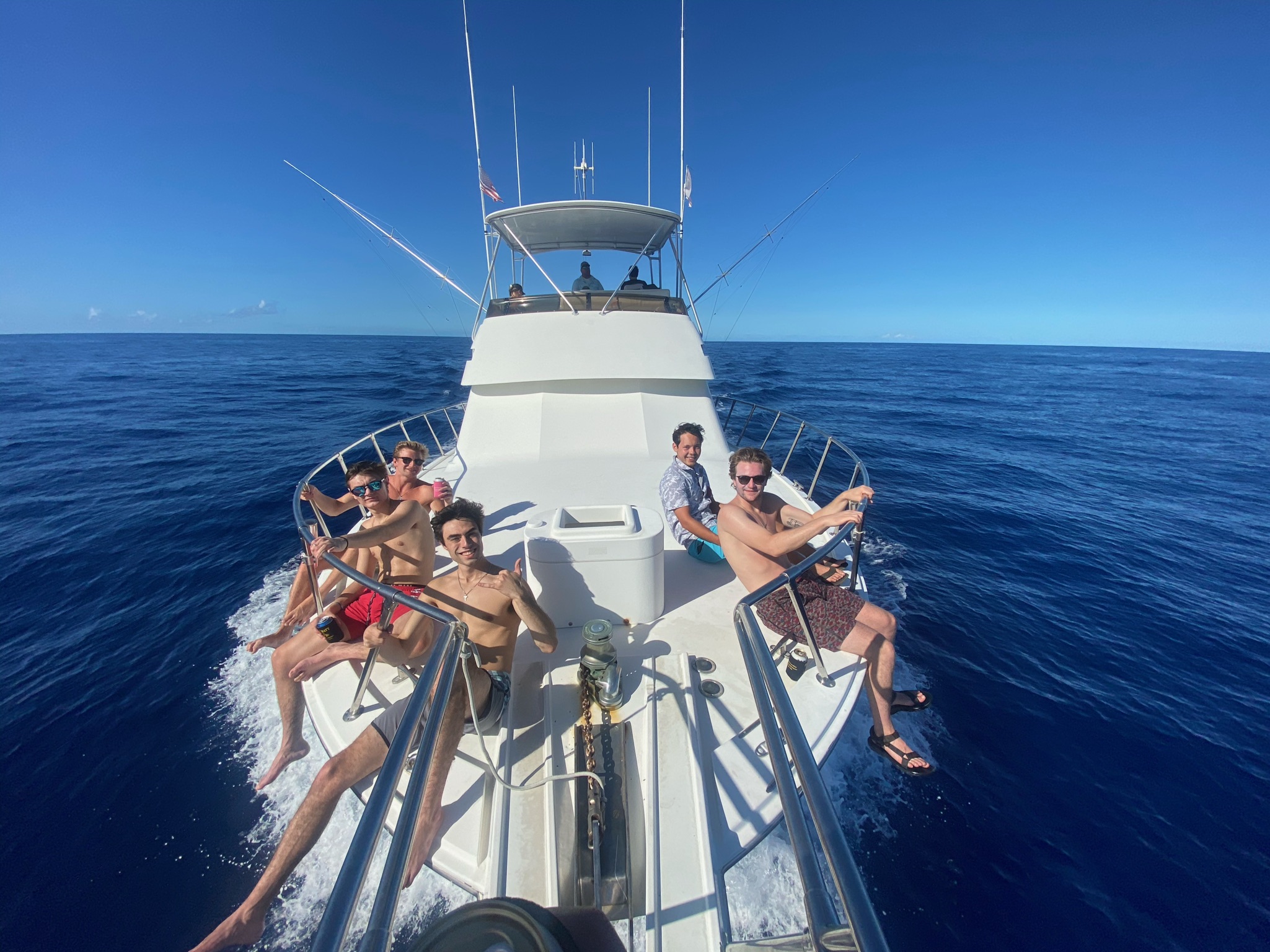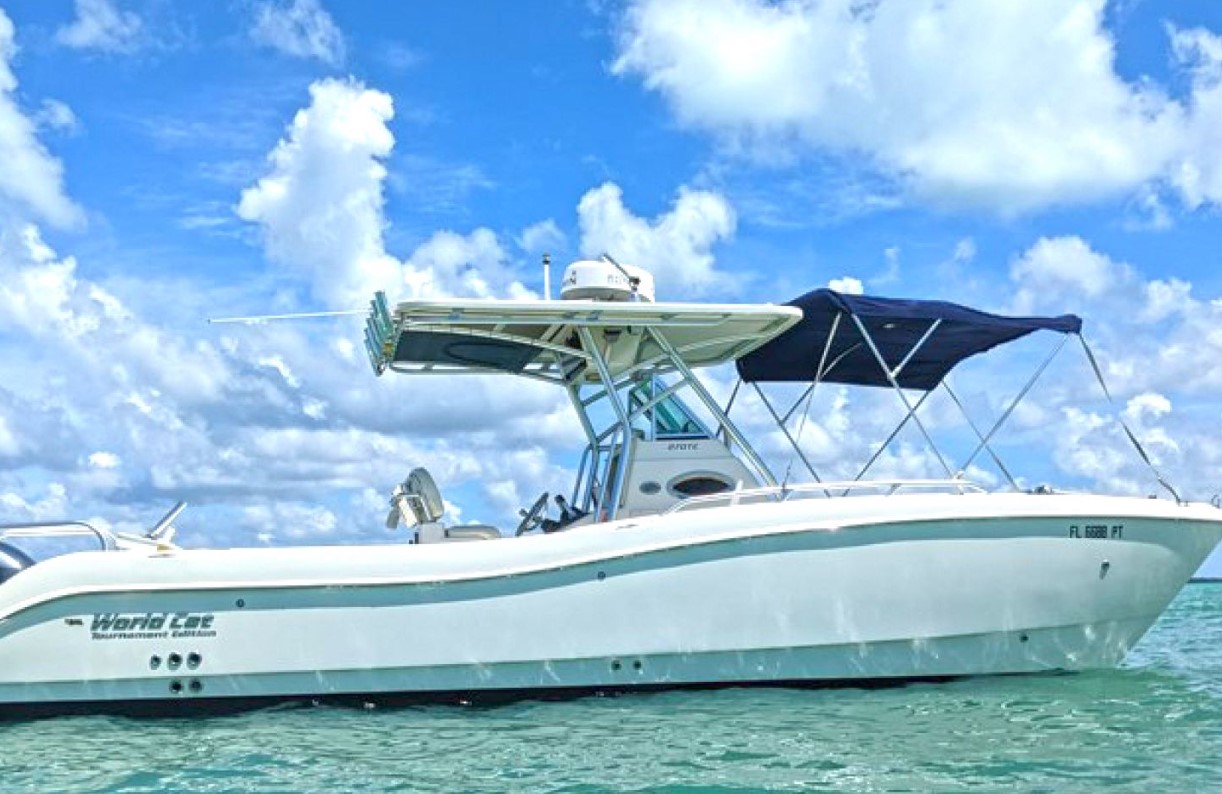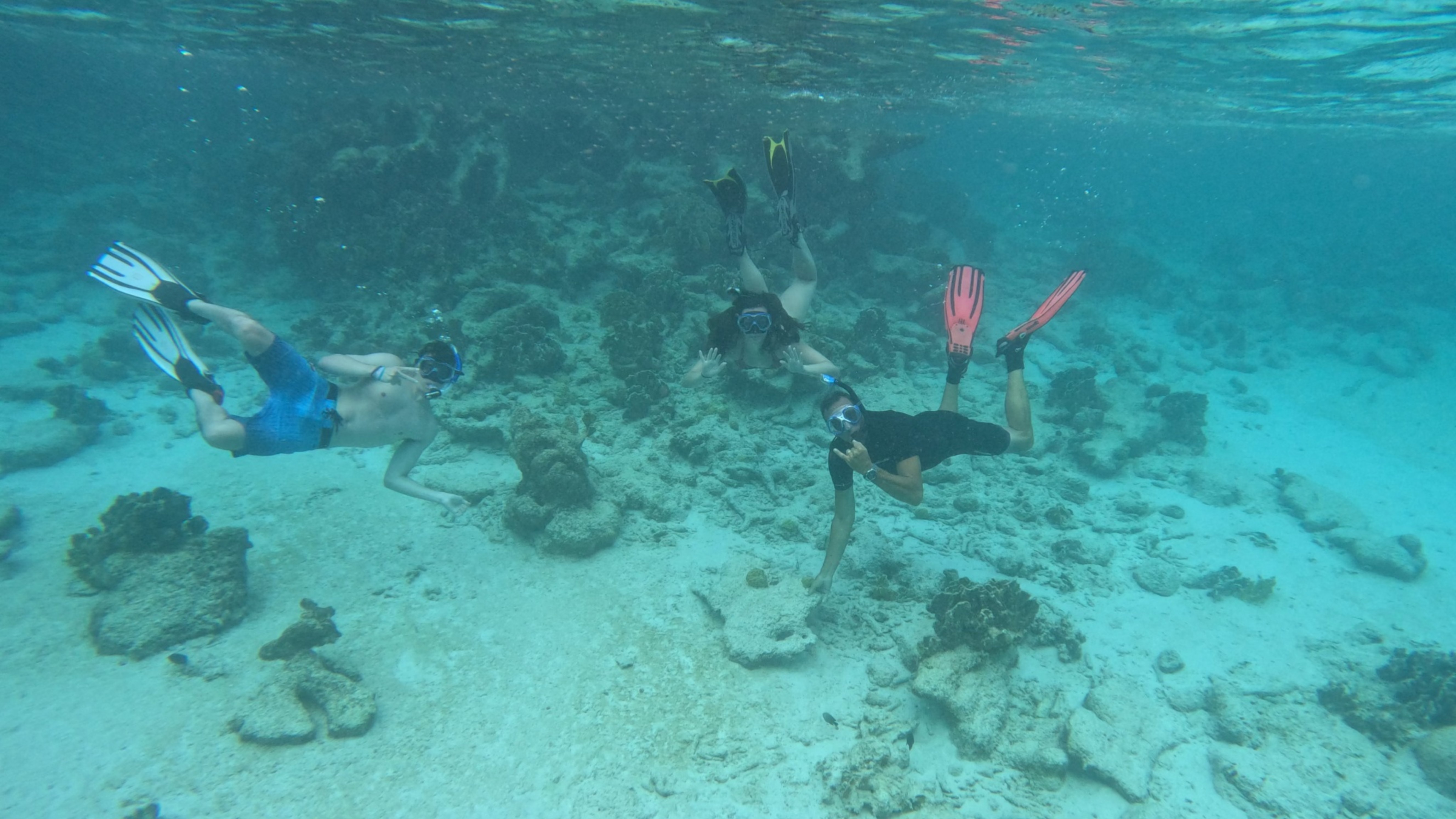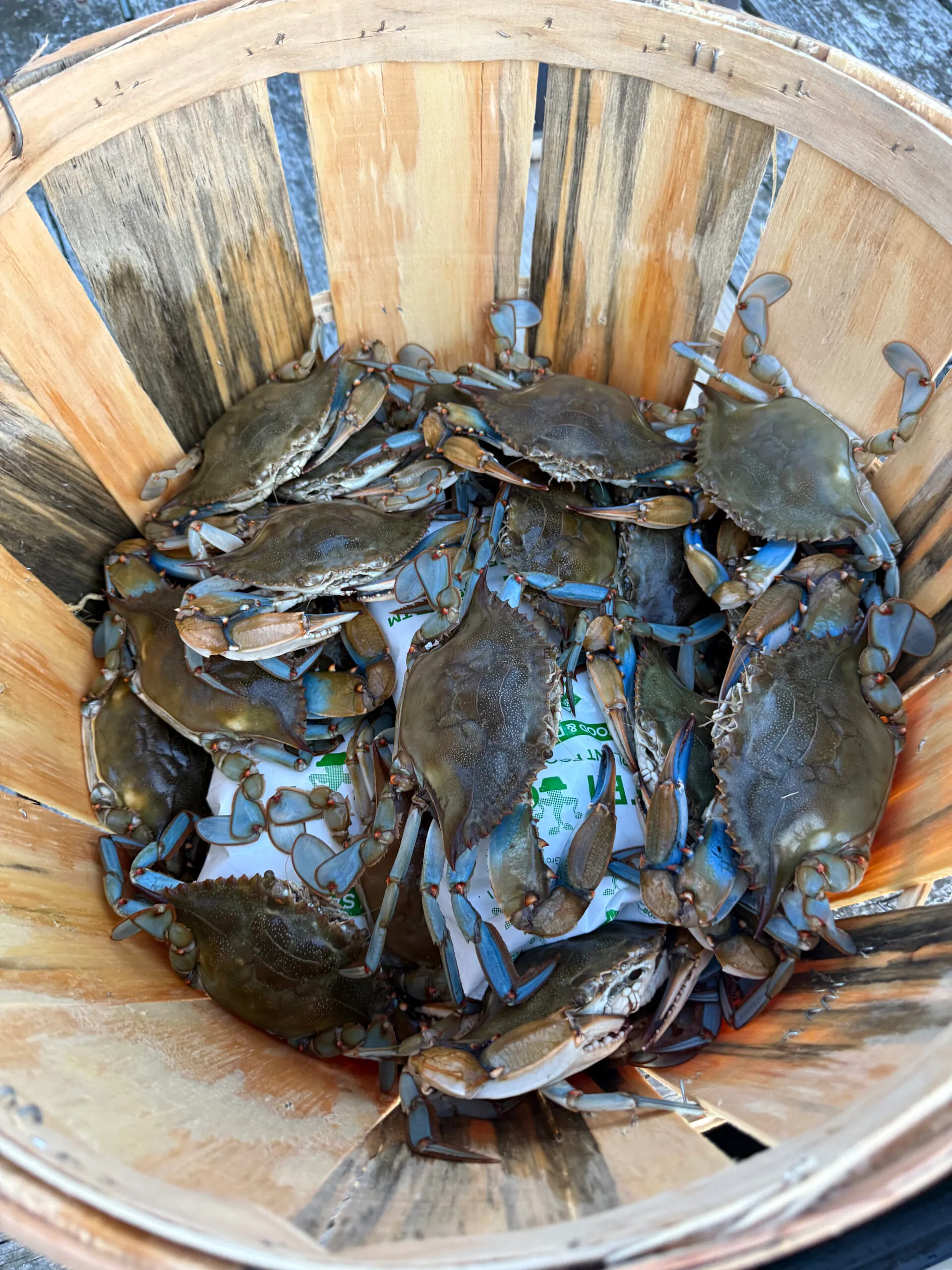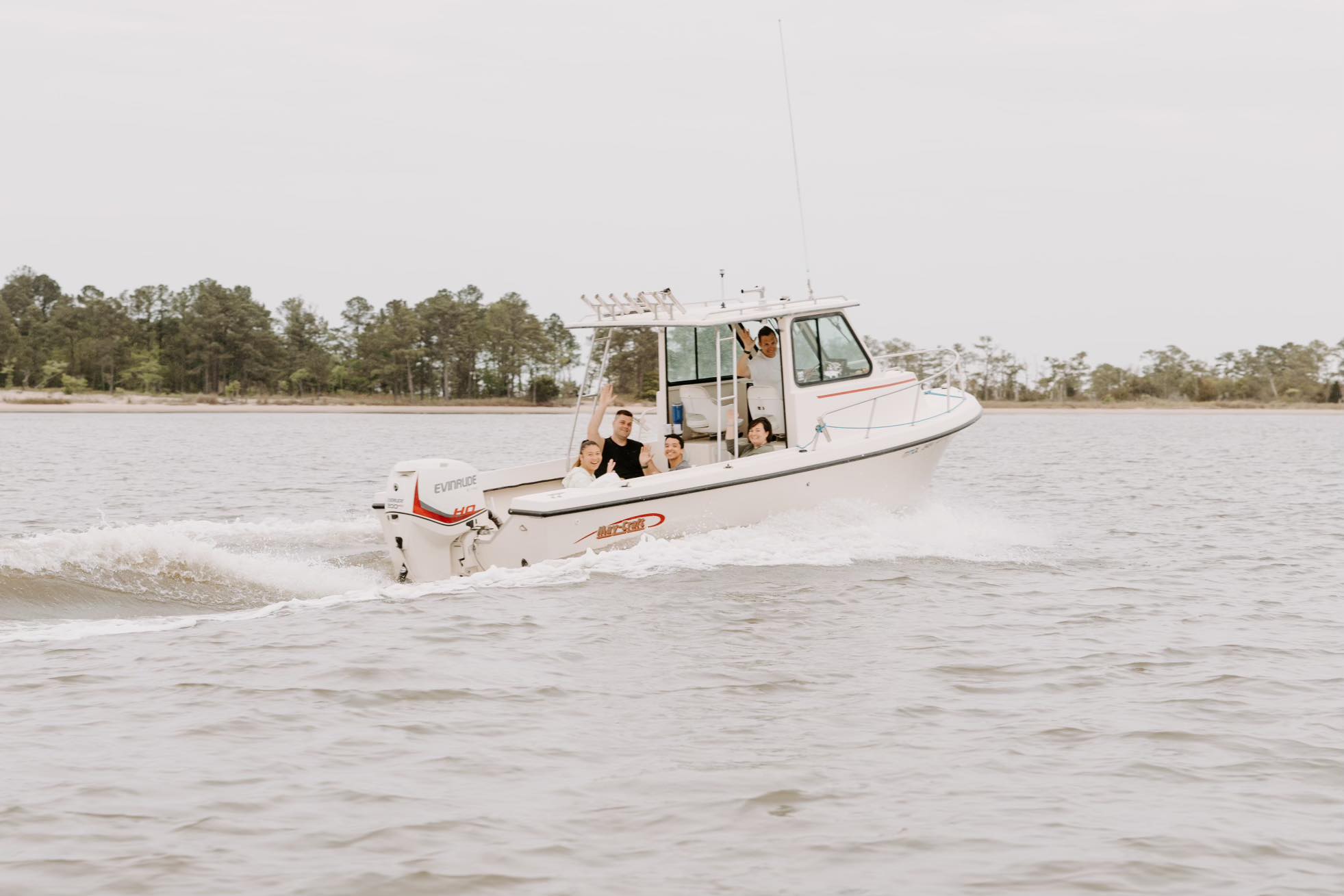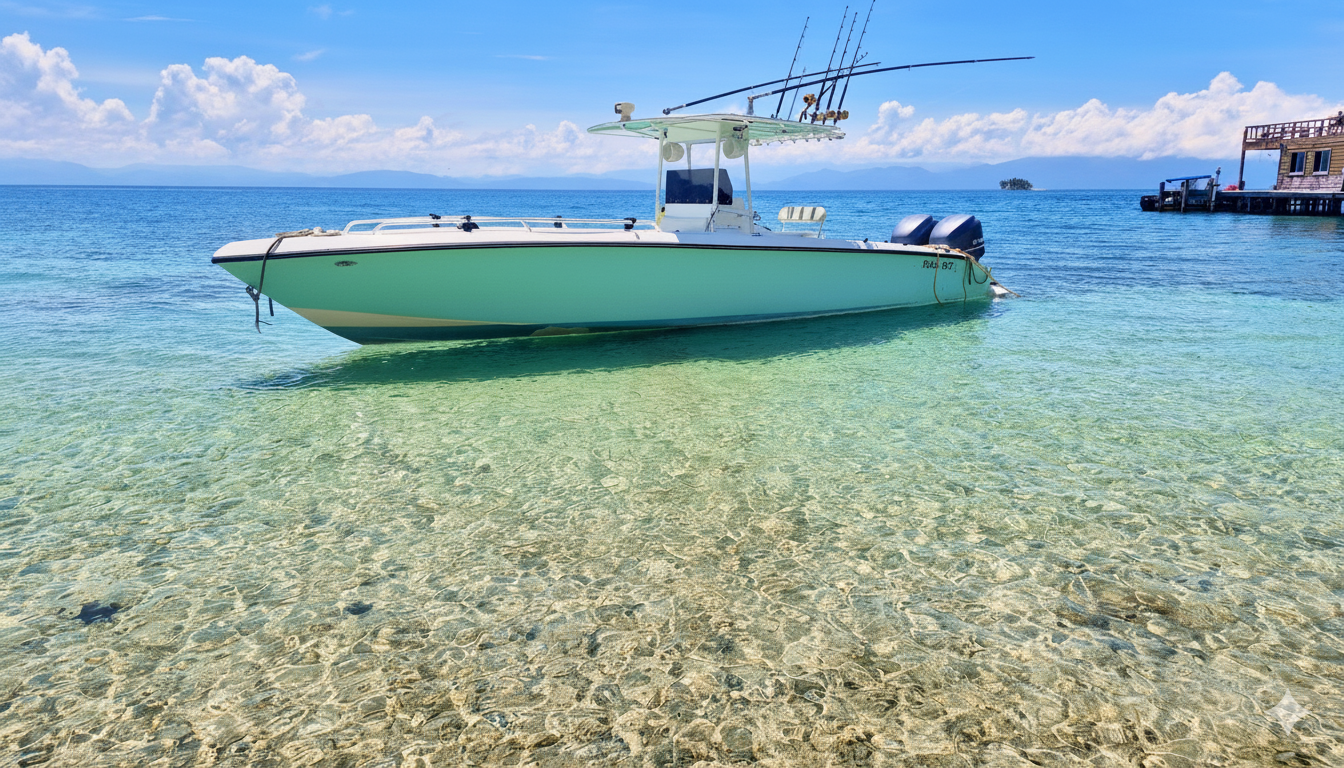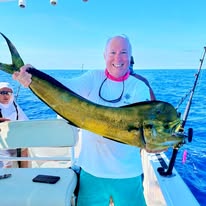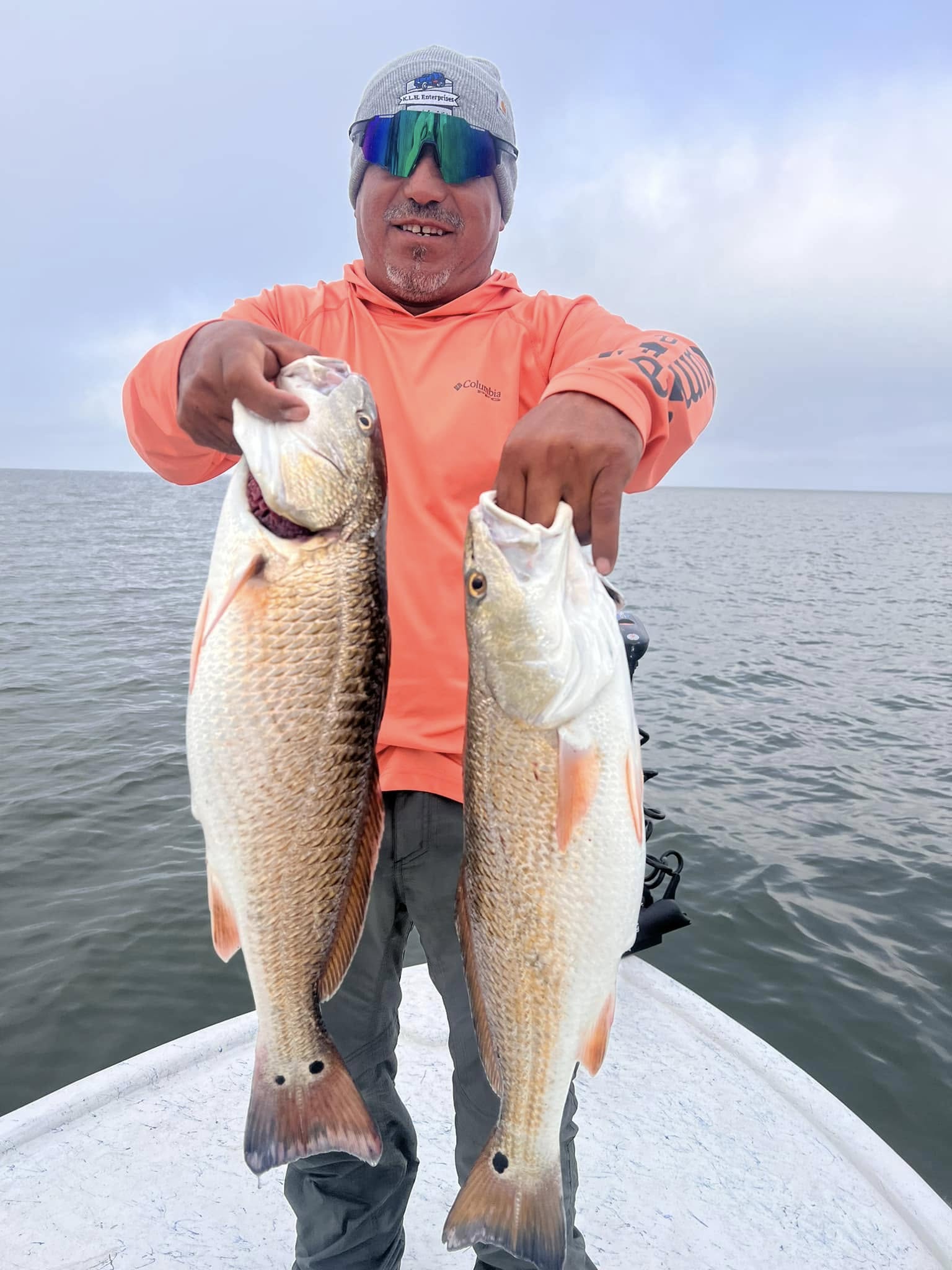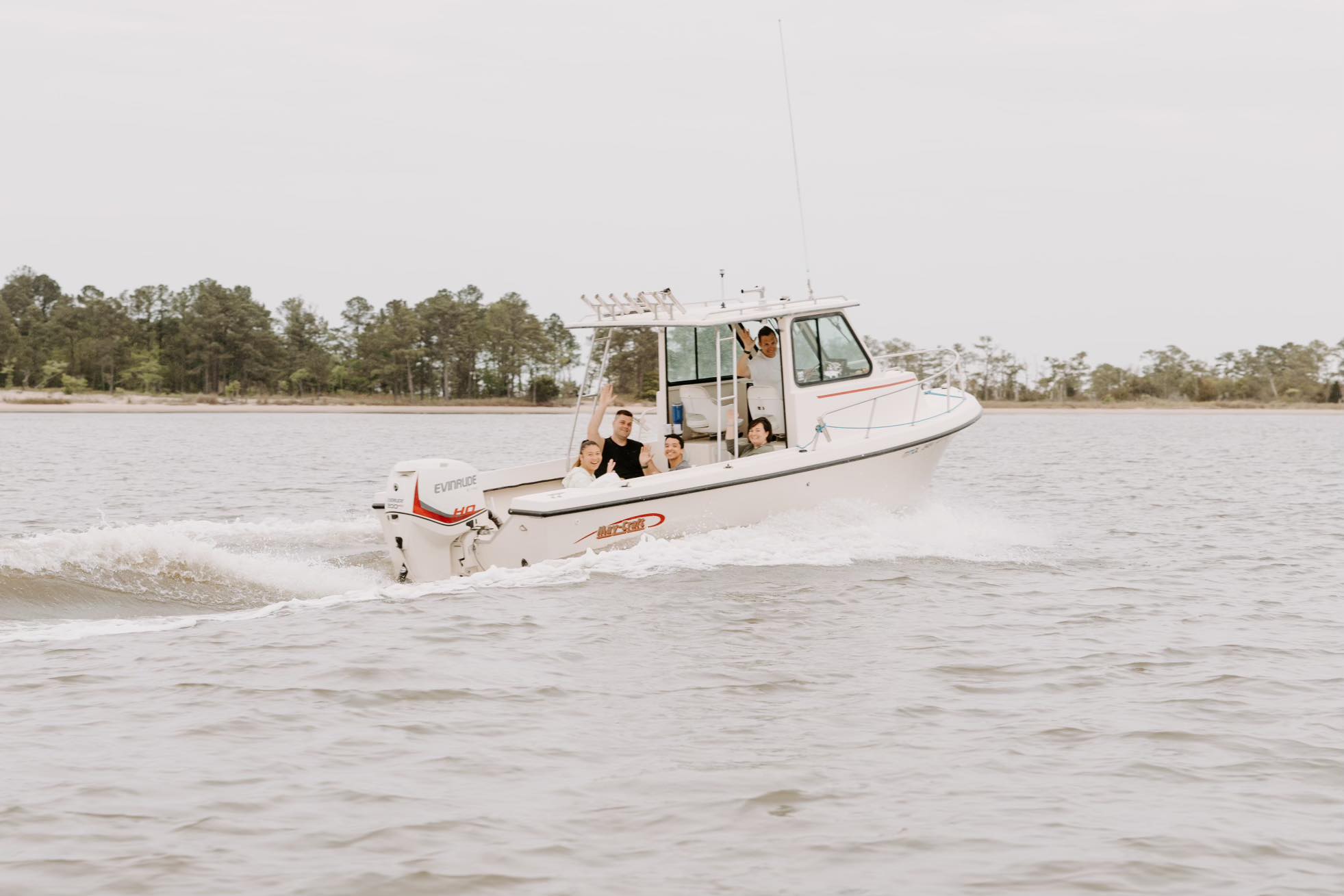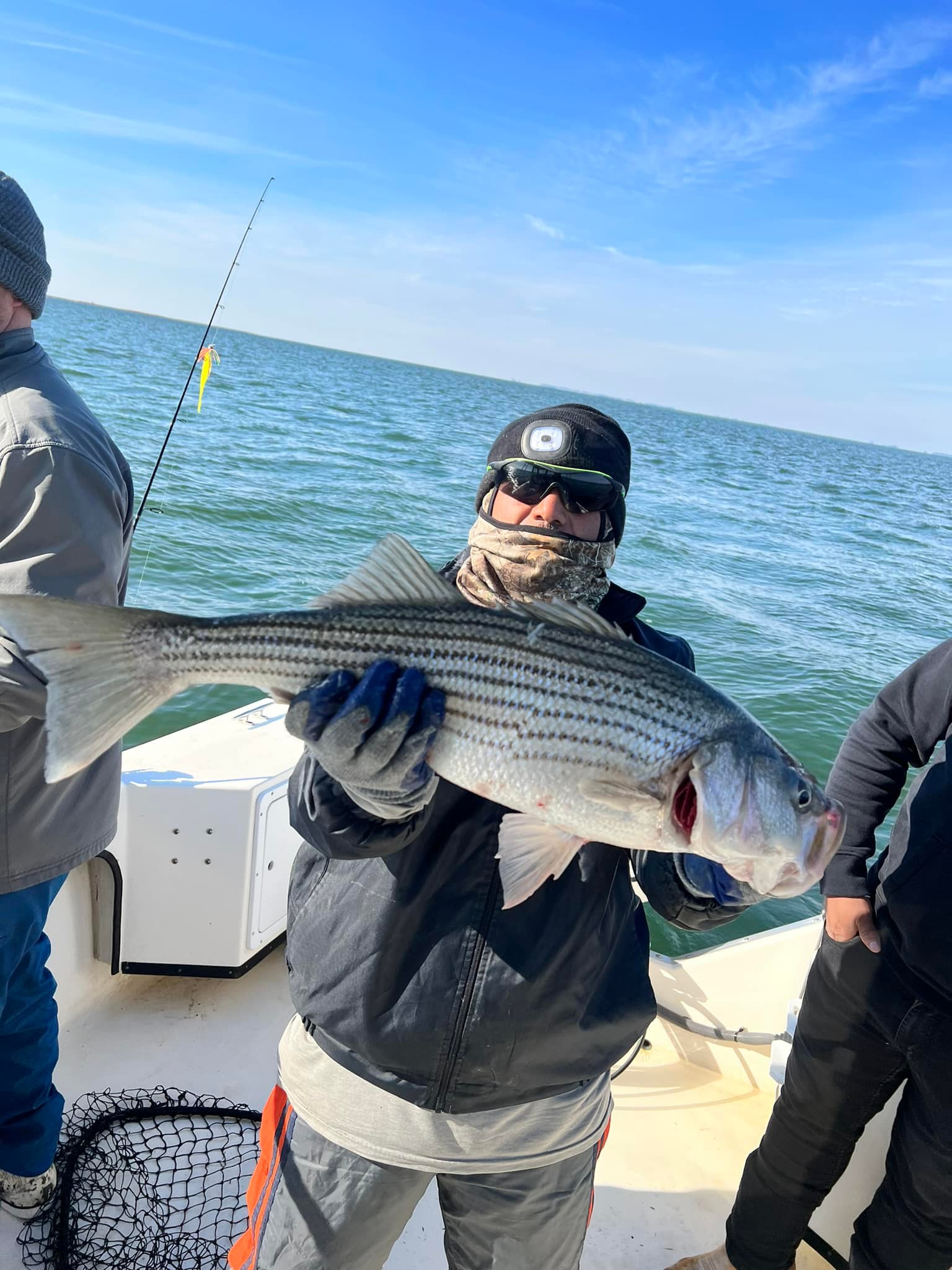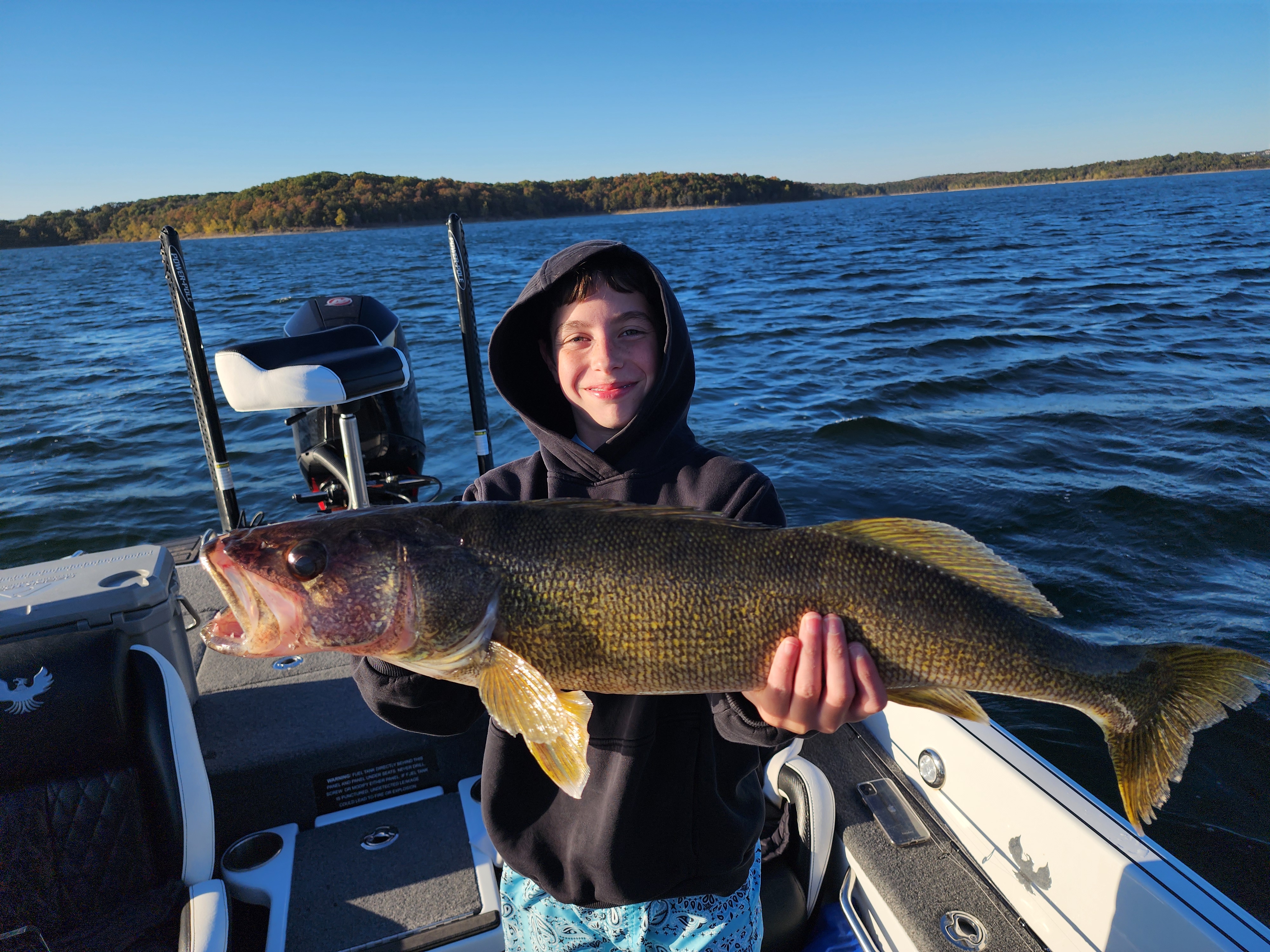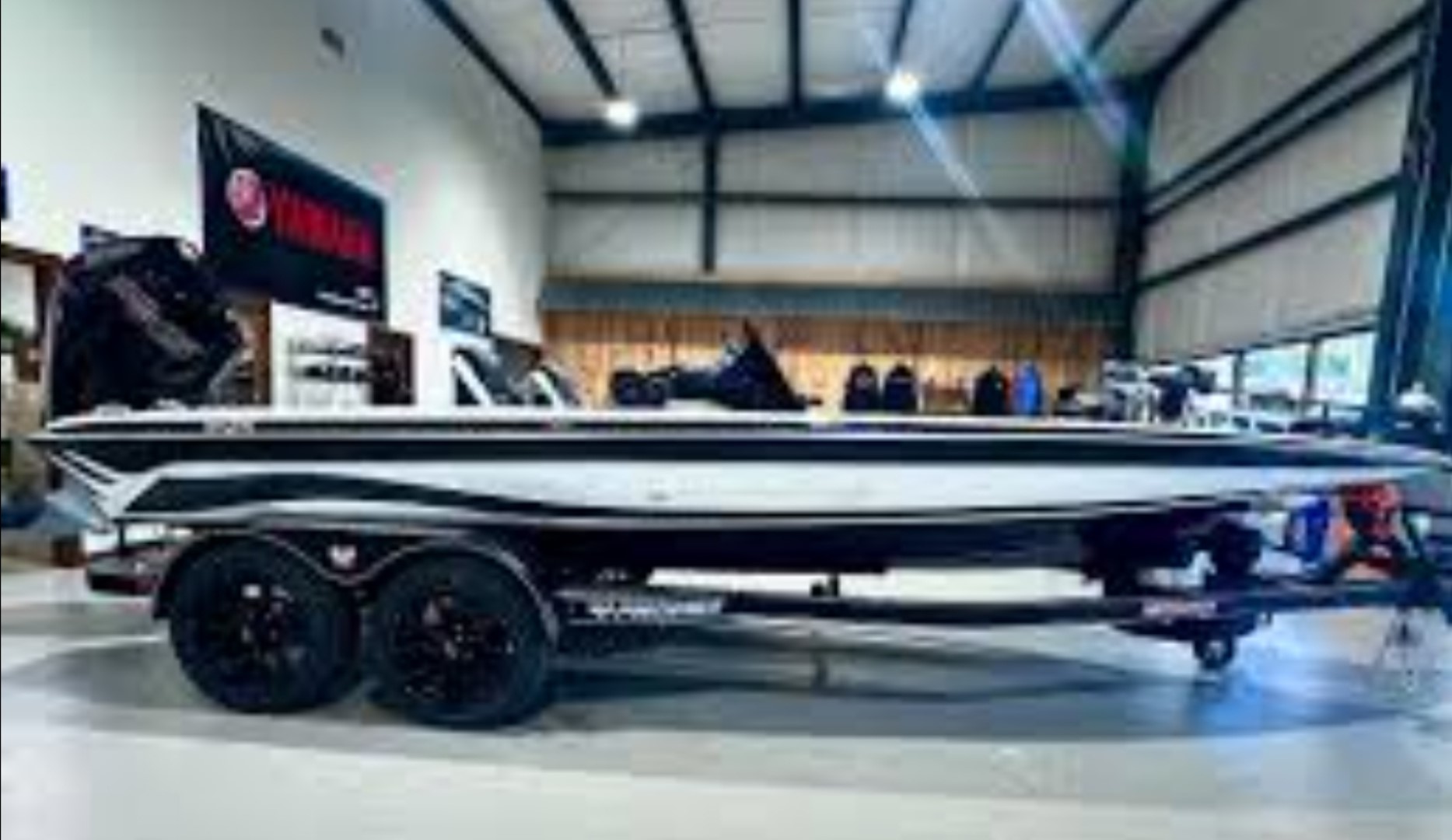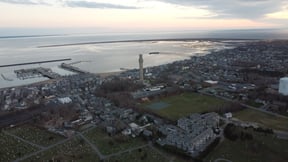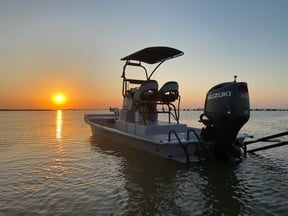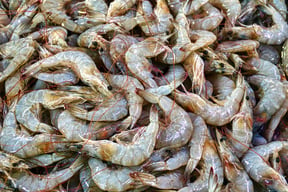Lake Ida (4-8HR)
Inshore, Nearshore, Flats in Venice
Tails In The Tides-Redfish & Trout
Lake Fishing in El Dorado Springs
Beaver Lake - Bass & Walleye
Deep Sea, Nearshore, Snorkeling in Kaiminani
Fishing And Snorkel Trips
Deep Sea, Nearshore, Snorkeling in Kaiminani
Kaiminani, HI Offshore Fishing
Deep Sea, Nearshore, Snorkeling in Key Largo
Key Largo Fishing & Snorkel Combo
Inshore, Flats, Eco Tour in Nanticoke
Crabbing And Casting Adventure!
Offshore Fishing Trip
Inshore, Flats Fishing in Nanticoke
4-6 Hour Inshore Trip
Bull Shoals - Bass & Walleye
We started Captain Experiences to make it easy to book fishing and hunting guides around the world. With over 2,000 Damn Good Guides, our platform makes finding and booking a trip seamless. Head here to check out our trips.
Major Rivers in Texas
There are at least 14 major rivers that flow through Texas creating some of the best spots for fishing, paddling, and just hanging out. The rivers that connect have been grouped together and listed in order from north to south using their northernmost point in the state in order to cover them in the most effective way. Let’s take a trip across Texas and look at the incredible outdoor opportunities these rivers bring to the state.
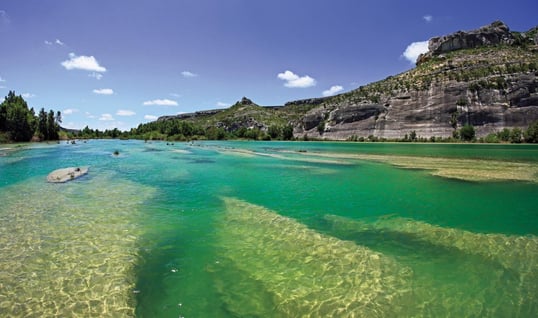
The Devils River is clean, clear, and cool even in the summer
The Canadian River
The Canadian River is the longest tributary of the Arkansas River and a popular body of water for anglers in the Texas Panhandle. The river begins on the southern edge of Colorado and flows through New Mexico before cutting through Texas. The Canadian river is dammed in Sanford Texas to form Lake Merideth which is designated as a National Recreation area.
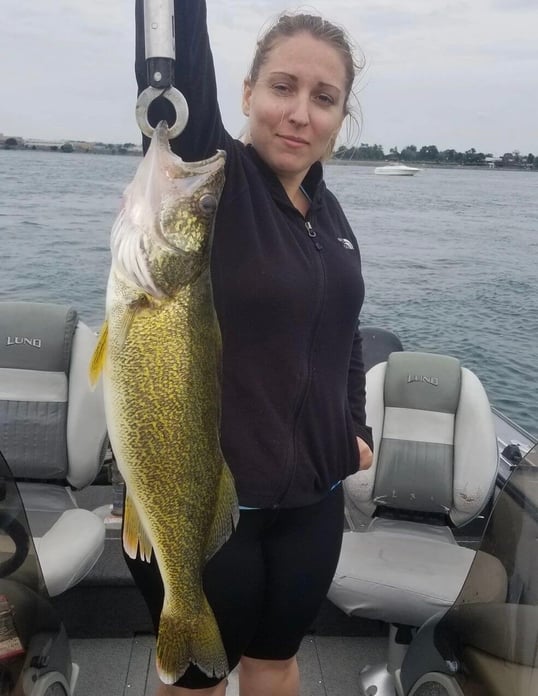
The section of the Canadian River that runs through Texas is about 190 miles long but access is limited on the upper half. The best fishing on the river is in Lake Merideth which has a wide variety of sportfish including largemouth, smallmouth, and white bass along with walleye, catfish, and crappie. The most popular fish in this lake by far is the walleye which commonly reaches six to eight pounds.
The fishing above Lake Merideth suffers from lack of cover, shallow water, and slow flow which produces small fish and low populations. The Oxbow lakes below the lake have better public access and significantly better fishing opportunities for bass, crappie, and sunfish.
The Red River
The Red River begins with three forks in the Texas Panhandle that come together and run along the Texas and Oklahoma border. The Red River has become famous for the incredible fishing along stretches of the river and on Lake Texoma. The great fishing is due to the unique water qualities created by the mix of nutrients brought in by three forks that create the Red River.
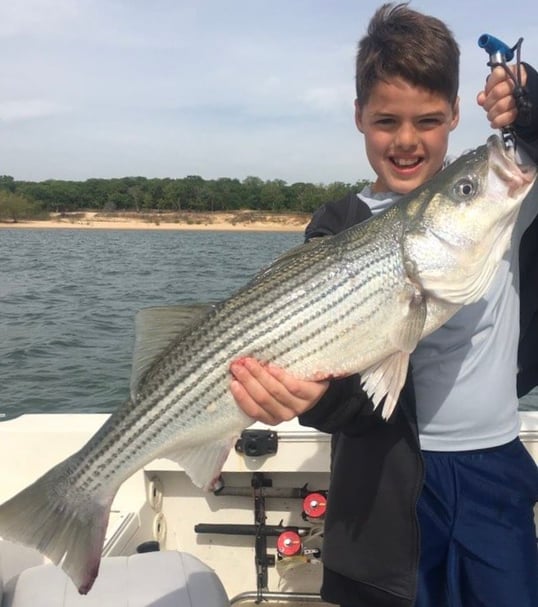
The most distinct feature of the Red River is the red color but what makes it special is the natural salinity. The South Fork or Prarie Dog Town Fork, is the origin of the Red River which is joined by the Salt Fork and then the North Fork. The natural salinity in the Red River comes from an ancient inland sea that evaporated millions of years ago. This left behind a massive salt deposit that now seeps into the tributaries that feed the river.
Fishing on the Red River above Lake Texoma is difficult with fewer fish, wildly fluctuating flow volumes, and a sticky sand bottom. The fishing on Lake Texoma and below the dam is exceptional with some of the best freshwater striper fishing in the country. The natural salinity is a key part of how this lake became one of the rare lakes with a naturally self-sustaining striper population. When the dam gates are open and water is flowing downriver, anglers flock to the banks to get their shot at the giant stripers that feed there. The other fish commonly caught include largemouth, smallmouth, and white bass along with crappie, catfish, sunfish, walleye, gar, and carp.
Brazos River
The Brazos River is one of the most significant rivers in Texas with strong ties to the state’s history and connecting the Panhandle to the Gulf. The river is home to a diverse fish population with great fishing opportunities starting just above Possum Kingdom Lake. Being one of the longest rivers in Texas and the 11th longest river in the United States, there is a lot of water to cover.
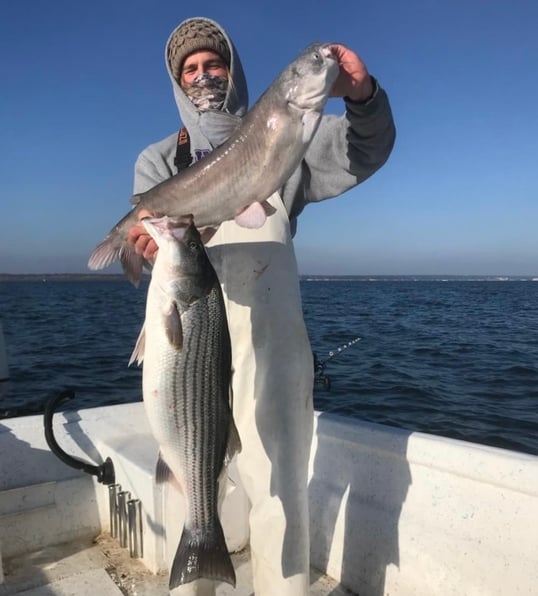
The drainage basin that feeds the Brazos river is huge picking up five primary tributaries and 15 sub-tributaries along its southeast path to the Gulf. There are three dams along the river forming Possum Kingdom Lake, Lake Granbury, and Lake Whitney all of which have great fishing. Tubing is popular on the Brazos river near Waco, Texas likely due to the proximity of the University of Baylor. The best fishing on the Brazos starts just above Possum Kingdom Lake where the Clear Fork joins and substantially increases the volume of the river. From that point on the Brazos has great fishing around every bend and on every lake.
Below each of the lakes, the water is clear with sand and rock on the bottom and tons of trees growing along the banks. Several species of bass thrive here including largemouth, spotted, and occasionally white bass that ambush baitfish from cover. Anglers will also find catfish, sunfish, and freshwater drum in certain sections of the river. The three lakes along the river have all of these species with the addition of striper and crappie.
Colorado River
The drainage and usually dry tributaries in New Mexico trickle down to Lamesa, Texas where the start of the Colorado River form. From there, the river flows through ten reservoirs before it empties into Matagorda Bay and the Gulf of Mexico. While the Upper Colorado River lacks flow and fish habitat, the reservoirs have plenty of great opportunities to go fishing.
J.B. Thomas Reservoir, E.V. Spence Reservoir, and O.H. Ivie Lake have the best fishing on the Upper Colorado with common catches including largemouth bass, catfish, and crappie. J.B. Thomas Reservoir is the smallest and shallowest of the three but offers great fishing for crappie and catfish. E.V. Spence Reservoir is still recovering from a golden algae bloom in the early 2000s that killed over 2 million fish. Fortunately, the fish are starting to recover with catfish and largemouth bass being the quickest to bounce back. O.H. Ivie Lake is the largest and deepest reaching a maximum depth of 119 feet. It is also the best lake of the three Upper Colorado Reservoirs for fishing with excellent opportunities to catch largemouth, smallmouth, and white bass as well as catfish and crappie.
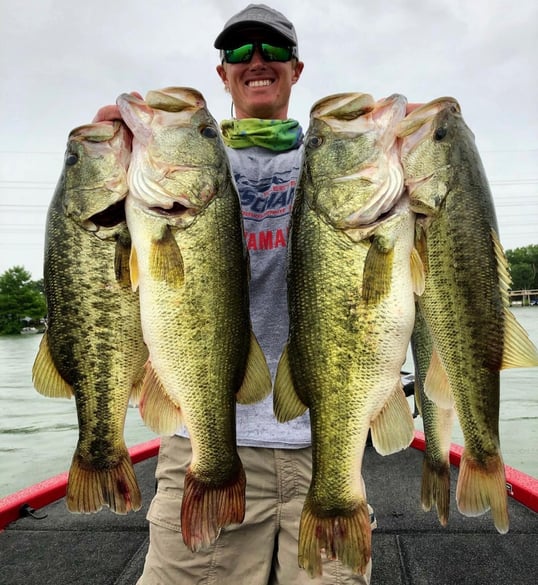
The best of the Colorado River is in the lower half home to the seven Highland Lakes with great fishing and endless paddling trails. These lakes are typically narrow with rocky bluffs but with deep clean water, the fish thrive here. For Lake Austin, Lady Bird Lake, and Lake Marble Falls the dominant species are largemouth bass, catfish, and sunfish. Lake LBJ, Inks Lake, and Lake Buchanan take things up a notch with white bass and hybrid striped bass along with the usual species. Lake Travis also has great fishing for all of the previously mentioned fish but also has a healthy population of the Texas native Guadalupe bass. All of these lakes are beautiful and clean attracting a wide variety of recreational activities. Once the river leaves Austin the river fishing and paddling is exceptional and if you’re determined you can take it all the way to the coast.
Trinity River
The Trinity River is 710 miles long and is the longest river entirely within Texas. The Trinity is made up of four forks that flow through 31 lakes before reaching the coast emptying into Trinity Bay and the Gulf of Mexico. The Trinity is famous for great fishing both on the river and in the lakes which are some of the most popular lakes in the state.
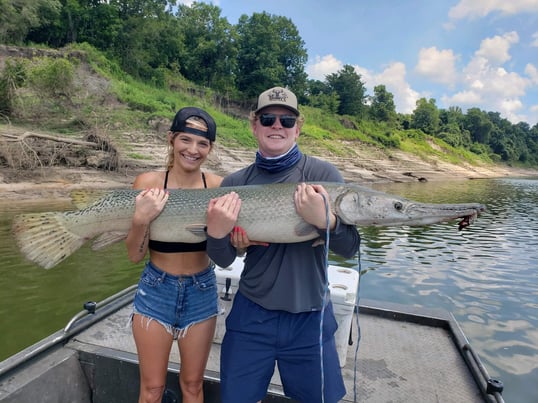
The forks are comprised of the Clear Fork, West Fork, Elm Fork, and East Fork which start north of DFW and funnel together as they runs southeast. The Clear Fork begins just north of Weatherford, Texas where it then flows through Lake Weatherford and Benbrook Lake before joining the West Fork. The West Fork starts in Archer County and runs through Lake Bridgeport, Eagle Mountain Lake, and Lake Worth. The Elm Fork begins Near Gainsville where it feeds Ray Roberts Lake, Lewisville Lake, and joins the West Fork in Dallas. The East Fork starts near McKinney and heads south creating Lavon Lake, Lake Ray Hubbard, and finally merges with the rest of the Trinity River just southeast of Dallas.
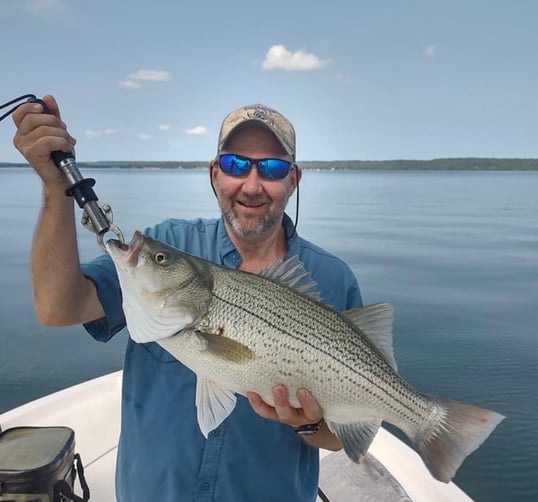
Three of the most popular fishing spots along the Trinity River are Richland Chambers Reservoir, Lake Livingston, and Trinity Bay in Galveston. The fishing in the stretches of river and on the lakes has great opportunities for catching bass, catfish, crappie, and monster alligator gar. The most prominent bass species along the Trinity River include largemouth, smallmouth, white, and hybrid striped bass. Once the river reaches Galveston the target species change to redfish and speckled sea trout. Regardless of where you go on the Trinity River from plains to pines or all the way to the coast, the fishing is well worth the trip.
Neches & Sabine Rivers
The Neches River start in Van Zandt County and flows 416 miles southwest through the piney woods of east Texas. The Sabine River begins at Lake Tawakoni and travels 360 miles south through prairie and piney forest. The mouth of these rivers drain into Sabine Lake Which is known for an incredible mix of inshore and inland fish. The lake is also home to Port Arthur and Sabine Pass which connects the lake to the Gulf.
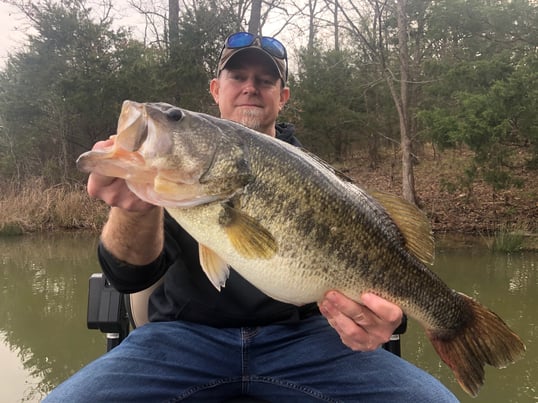
The tributaries of these rivers include some of the best bass fishing lakes in the state including the previously mentioned Lake Tawokoni as well as Sam Rayburn Reservoir and Lake Fork. All of the lakes along the Sabine and Neches Rivers have great fishing for crappie, channel catfish, and a variety of other bass species.
Rio Grande, Pecos, & Devils River
The Pecos, and Devils River merge with the Rio Grande along the border of Texas and Mexico. The Rio Grande starts in southern Colorado and flows south to create the border of the U.S. and Mexico From El Paso to South Padre. The Pecos is formed in northern New Mexico at an elevation of 12,000ft and travels south where it joins the Rio Grande.
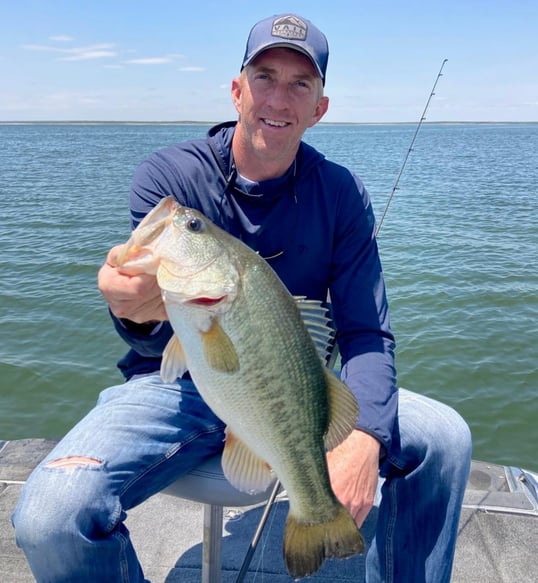
The Devils River is the shortest of the three but it begins where six small streams come together in Sutton County. The river winds 90 miles through canyons, deep pools, and rapids before joining the Rio Grande and Pecos River in Amistad Reservoir. The now complete Rio Grande flows out of Amistad Reservoir through Falcon Lake then empties into the Gulf near South Padre Island.
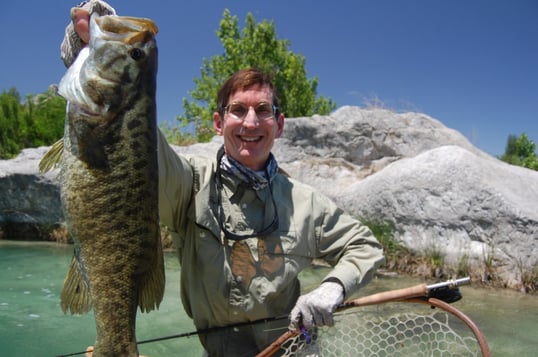
The Pecos and Devils River have unique fly fishing opportunities for largemouth and smallmouth bass in crystal clear water. Falcone Lake also has great bass fishing along with channel catfish in deeper spots. Amisatad Lake has tons of action with largmouth, smallmouth, white, and hybrid striped bass with channel and bluefish catfish as an added bonus. These impressive rivers are some of the last wild places in the state but they offer experiences you can’t find anywhere else.
Nueces River
Running 315 miles from its headwaters in Edwards and Real County to the Gulf, the Nueces river is a beautiful oasis in one of the most arid parts of the state. The Nueces means “nuts” in spanish and is named after the abundant pecan trees along the banks of the river. The spring fed river is clear with a slight blue tint and in the upper reaches the water is cool allowing a diverse fish population to thrive.
The fishing in this river is amazing with Guadalupe, largemouth, and smallmouth bass along with a variety of sunfish species. There are three lakes on the Nueces River including the Averhoff Reservoir, Choke Canyon Reservoir, and Lake Corpus Christi. On Averhoff and Choke Canyon Reservoir the fishing consist of giant largemouth bass that frequently hit weights in the double digits along with channel catfish and crappie. Lake Corpus Christi has a few additional fish including white bass and all three species of catfish easily making it the best body of water on the Nueces to catch a mixed bag.
Guadalupe & San Antonio Rivers
The Guadalupe River or "Guad" for short, begins west of Kerrville flowing 230 miles through Canyon Lake to San Antonio Bay. With exceptionally clean water and an average temperature of 63 degrees this river is popular with paddlers, anglers, and tubers. The San Antonio River is formed by several springs in San Antonio, Texas that pool up and flow south merging with Calaveras Creek before joining the Guadalupe River just before entering San Antonio Bay.
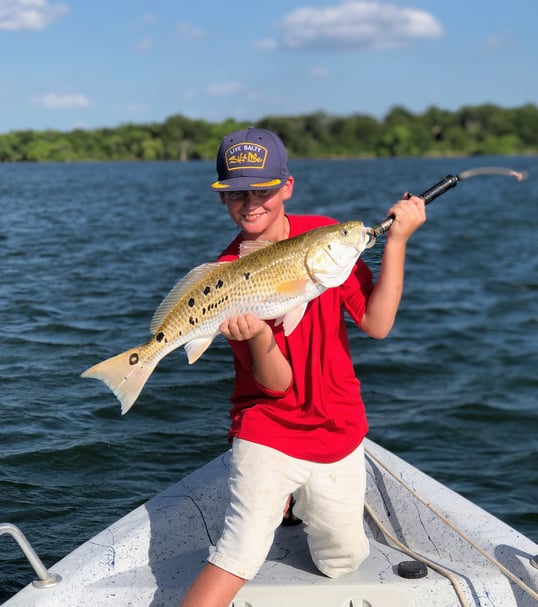
The most notable fishing of the San Antonio River Tributaries is on Calaveras Lake where bass, catfish, and red drum can be caught. The redfish are stocked every year by Texas Parks and Wildlife but they still grow large for a lake fish. On the Guad, Canyon Lake has solid fishing for the usual freshwater suspects but the real magic happens just downstream.
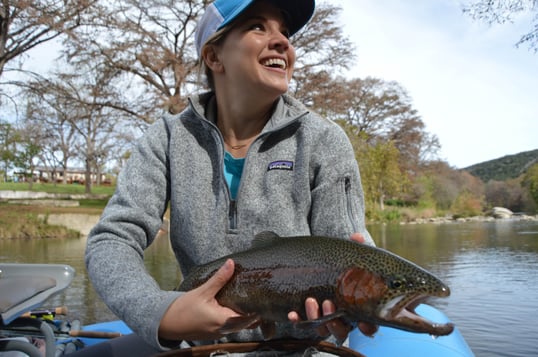
The Comal and San Marcos Rivers are also cool spring fed rivers that merge with the Guadalupe below the Canyon Lake. The unique tributaries of the Guadalupe make it the perfect place for cold water species to live with rainbow trout, brown trout, and smallmouth bass happily inhabiting these waters. The trout fishing is so good on the Guadalupe that it was named one of the top 100 trout streams in the U.S.
Joey Butrus
Updated on August 2, 2023

November 15, 2023

June 28, 2023
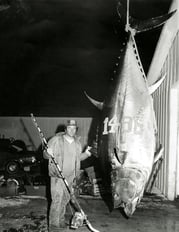
June 3, 2021
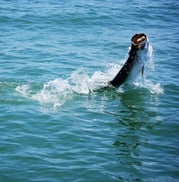
April 15, 2022

July 31, 2024
Related Articles
January 17, 2021
April 20, 2022
June 12, 2023
Featured Locations
- Fishing Charters Near Me
- Austin Fishing Guides
- Biloxi Fishing Charters
- Bradenton Fishing Charters
- Cabo San Lucas Fishing Charters
- Cancun Fishing Charters
- Cape Coral Fishing Charters
- Charleston Fishing Charters
- Clearwater Fishing Charters
- Corpus Christi Fishing Charters
- Crystal River Fishing Charters
- Dauphin Island Fishing Charters
- Daytona Beach Fishing Charters
- Destin Fishing Charters
- Fort Lauderdale Fishing Charters
- Fort Myers Fishing Charters
- Fort Walton Beach Fishing Charters
- Galveston Fishing Charters
- Gulf Shores Fishing Charters
- Hatteras Fishing Charters
- Hilton Head Fishing Charters
- Islamorada Fishing Charters
- Jacksonville Fishing Charters
- Jupiter Fishing Charters
- Key Largo Fishing Charters
- Key West Fishing Charters
- Kona Fishing Charters
- Lakeside Marblehead Fishing Charters
- Marathon Fishing Charters
- Marco Island Fishing Charters
- Miami Fishing Charters
- Montauk Fishing Charters
- Morehead City Fishing Charters
- Naples Fishing Charters
- New Orleans Fishing Charters
- New Smyrna Beach Fishing Charters
- Ocean City Fishing Charters
- Orange Beach Fishing Charters
- Panama City Beach Fishing Charters
- Pensacola Fishing Charters
- Pompano Beach Fishing Charters
- Port Aransas Fishing Charters
- Port Orange Fishing Charters
- Rockport Fishing Charters
- San Diego Fishing Charters
- San Juan Fishing Charters
- Sarasota Fishing Charters
- South Padre Island Fishing Charters
- St. Augustine Fishing Charters
- St. Petersburg Fishing Charters
- Tampa Fishing Charters
- Tarpon Springs Fishing Charters
- Venice Fishing Charters
- Virginia Beach Fishing Charters
- West Palm Beach Fishing Charters
- Wilmington Fishing Charters
- Wrightsville Beach Fishing Charters
